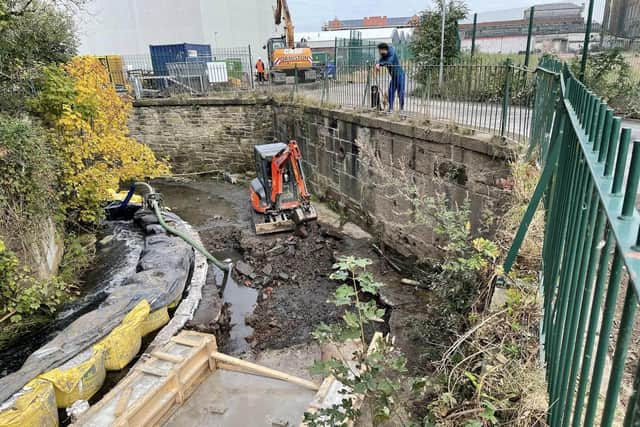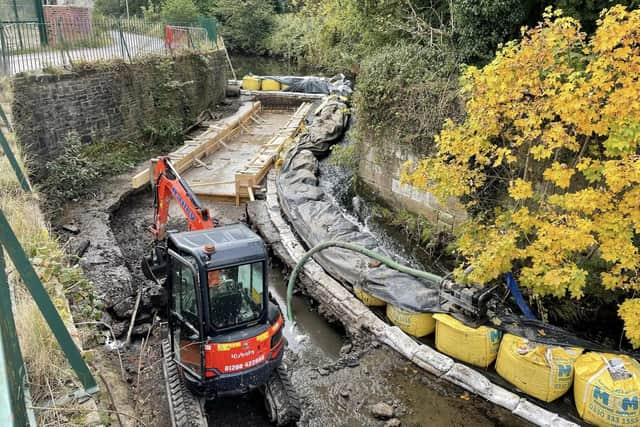Work to open up Wigan's river so that fish can migrate along it begins
and live on Freeview channel 276
The project, known as Opening Up the River, is being delivered by Ribble Rivers Trust with partners Groundwork Cheshire, Lancashire and Merseyside and hopes to make it easier for fish to migrate between Gathurst and Horwich
Work is already under way on the weir at Standish Bleachworks water treatement and the section between Eckersley’s Mills and Parson’s Meadow near Wigan Pier.
Advertisement
Hide AdAdvertisement
Hide AdUpon completion of these areas it will leave just Scholes weir and Gathurst as the last two obstacles to fish migration on the river Douglas.


The project will achieve its aims through reconnecting river habitat, resulting in a river environment that will support greater abundance and diverisity of fish, invertebrates, bird and mammals.
By improving one of the major rivers within Lancashire the project aims to raise the awareness of the biodiversity that it has to offer.
Additionally the finished work will benefit people as well as the local wildlife.


Advertisement
Hide AdAdvertisement
Hide AdCurrently in a degraded state, a legacy of construction and pollution from its industrial heritage, the Douglas is failing to meet “Good Ecological Status”.
The fish passes will reconnect 260 acres of the Douglas catchment, benefitting all fish but especially migratory species such as sea trout and Atlantic salmon.
It is hoped that these could be seen running up the river for the first time in over 200 years once the barriers have been addressed.
The success of the project will be determined by evaluating whether upstream and downstream habitats have been reconnected.
Advertisement
Hide AdAdvertisement
Hide AdThis will be studied through mark-recapture studies of fish using visual implant elastomer markings and electric fishing surveys.
A spokesperson from the Ribble Rivers Trust said: “This reconnection will improve fishes chances of reproducing, help them reach more food resources, and recover from floods, droughts, or pollution incidents quicker than before. The resulting healthier fish populations will support a healthier food chain benefitting birds and mammals.
“The project is progressing well, with the majority of the fish passes already having been completed.
"Monitoring carried out by the Trust is already showing a significant improvement in the numbers of invertebrates and fish, and the distances they are travelling.
